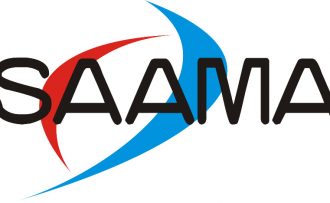About this course
Asset management is a strategic function of an organisation which ensures the highest level of physical asset performance. At the heart of this function are the asset care plans (ACPs) that
must manage the inherent failure modes of all of the organisation’s physical assets.
The asset care plan development process is based on the optimum maintenance mix (OMM) methodology developed by Pragma with the specific objective of assisting companies in developing and improving the asset care plans for their physical assets. The process consists of developing the optimum mixture of preventive, predictive, pro-active and reactive tactics which ensure the highest overall equipment effectiveness at optimum cost. These ACPs will turn the maintenance function into your organisation’s competitive advantage in gaining world class competitiveness.
This training course is aligned with the GFMAM’s 39 Subjects with a specific focus on the subject of operations and maintenance decision-making.
Outcomes
Explain how maintenance practices have evolved over the years
Describe the maintenance plan development process and responsibilities
Determine the criticality of assets based on the agreed criteria
Identify the key functions and functional failures of an asset
Analyse how and when items fail
Do a Failure Modes and Effects Analysis (FMEA) on a simple asset
Explain the different asset tactics (UBM, CBM and RTF) and their application
Select the appropriate tactics for a simple asset, based on the FMEA
Compile a detailed maintenance plan for a simple asset, including task descriptions, resource requirements, frequencies and responsibilities
Explain how to implement and optimise maintenance plans for critical assets
Asset management introduction
An overview of asset management and an introduction to Pragma’s Asset Management Improvement Programme (AMIP) business process in support of PASS 55.
Changing world of maintenance management
How asset and maintenance practices have changed over the last 60 years, and the challenges facing maintenance managers and departments going into the future.
ACP development process
Formalising an overall risk based approach for the development and maintenance of all the asset care plans.
Criticality analysis
- Developing a formal criticality model addressing all the appropriate business risk factors
- Applying the criticality model by performing a criticality analysis on system, asset and component levels
Functional analysis
- Partitioning a system or asset to a usable level for analysis
- Identifying the function and performance standard of these partitioned assets or components
Failure analysis
- Understanding how assets or components fail
- Performing formal failure analysis by completing a FMEA
Tactic selection
- Condition-based maintenance
- Usage-based maintenance
- Run-to-failure
- Design improvement
Asset management introduction
Exploring condition-based maintenance in more detail, by looking at the four most commonly used technologies, as well as other technologies available for more specific condition monitoring.
ACP detail development
Developing the detailed ACPs in support of the selected tactic
- What must be done?
- Who must do the work?
- How long will it take?
- What spare parts are required?
- How long will it take?
- How much will it cost?
ACP implementation
Putting all the ACPs together in a long term work plan and evaluating the combined effect to ensure the requirements are well balanced over the year. Is it practical from an operational context and does the budget exist to perform all the tasks?
OMM game
Put your knowledge to the test and show how well you can manage your maintenance function! By playing the OMM game, the seven implementation steps and the importance of choosing the right tactic for each application are identified in a practical and fun way.
Who should attend?
- Reliability engineers
- Maintenance managers and engineers
- Maintenance foremen and supervisors
- Production managers
- Maintenance planners
Format and duration
- 3-day classroom training
- 24 notional hours:
blended learning
compromising 6 x 4 hour
virtual classroom
sessions and online
learning
Take-home tools
- Conduct a self-assessment on the practices and associated performance of your organisation’s ability to develop and maintain its ACPs.
Certification
- Learners completing this training can obtain SAAMA CPD points.

